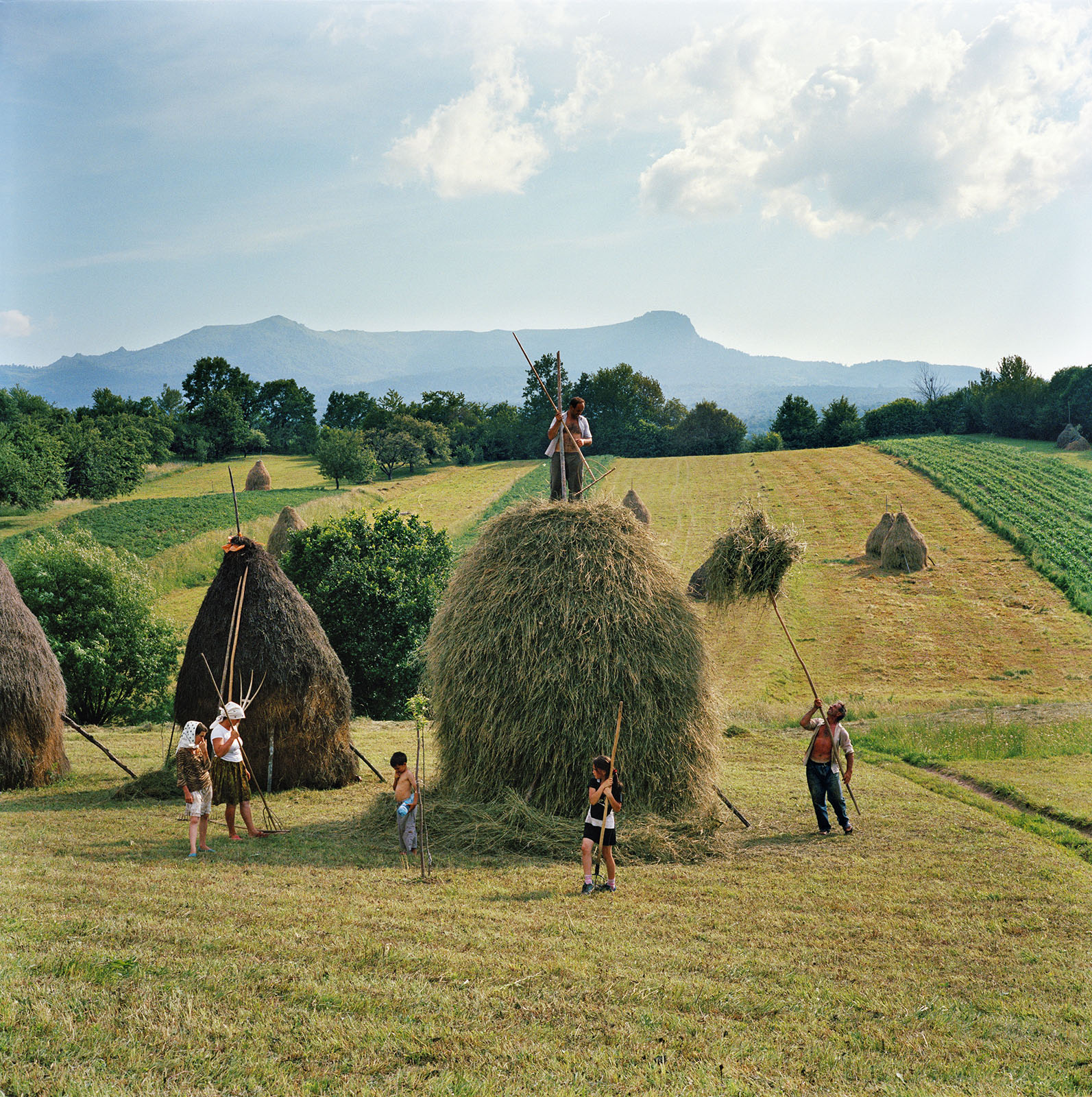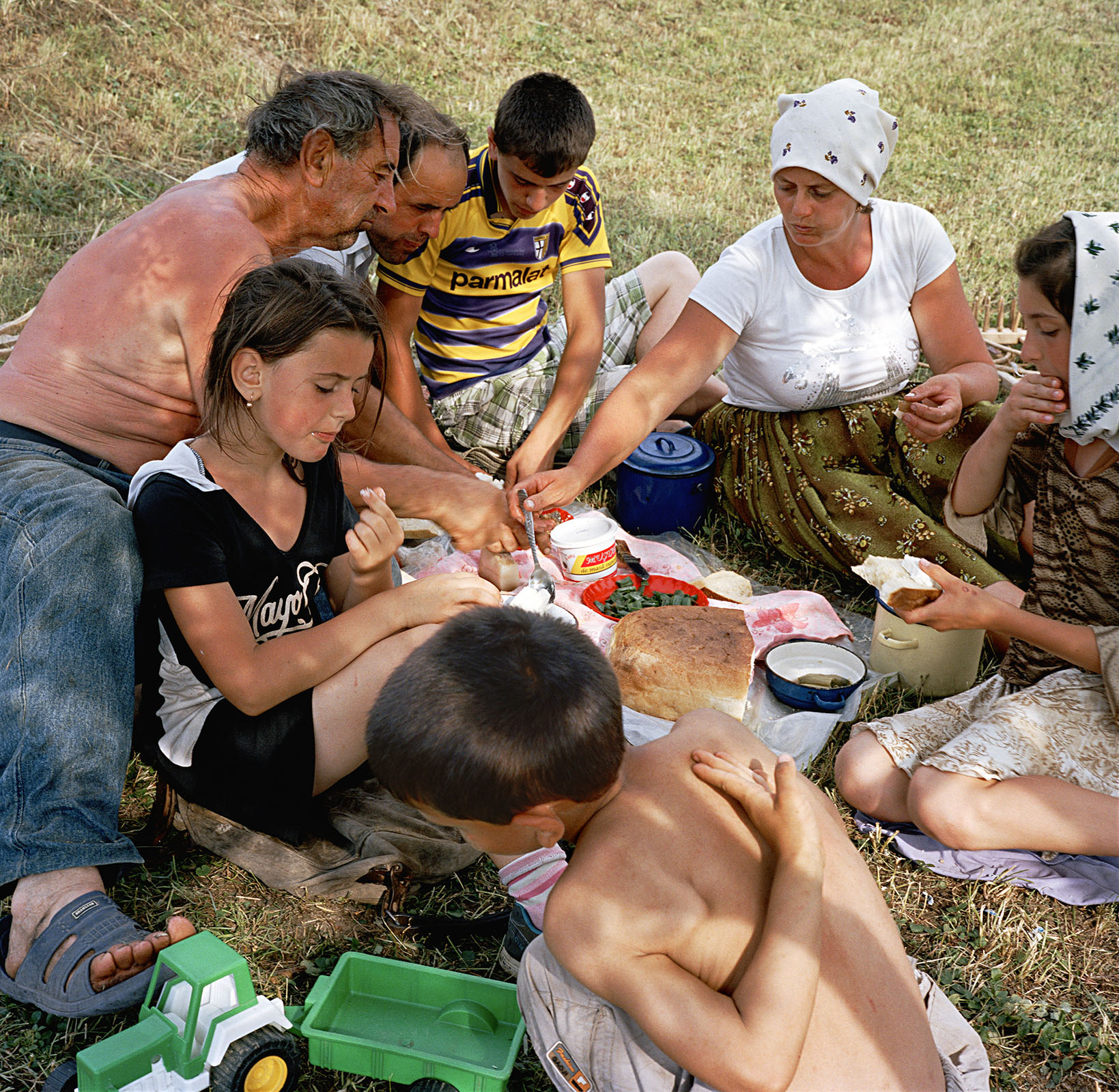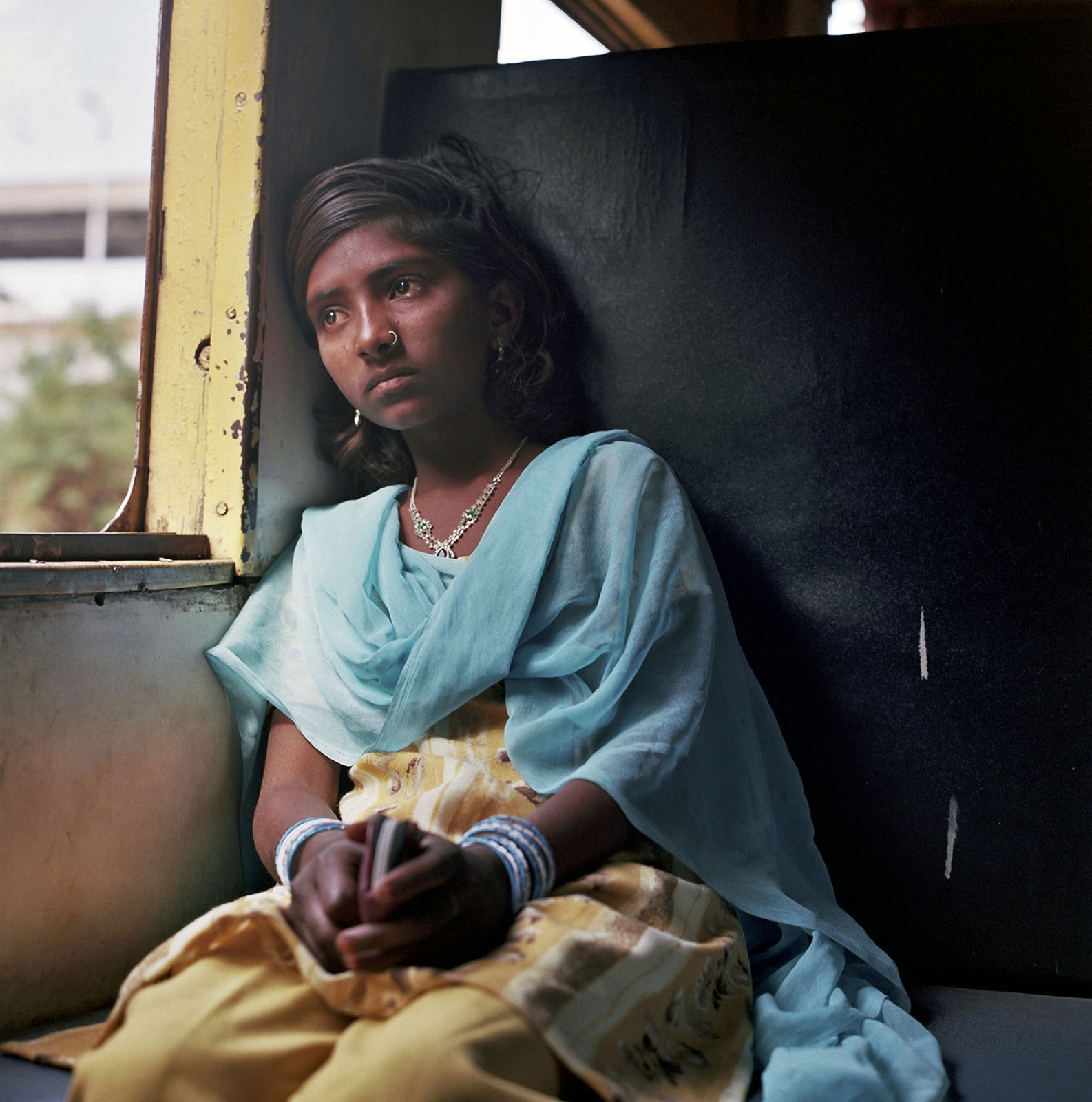
The whole Borca family, from Breb, puts finishing touches on one of the 40 haystacks it makes each summer. Maramures, Romania. June 2012
Rena Effendi is an award-winning documentary photographer from Azerbaijan, whose early work focused on the oil industry’s effects on people’s lives in her region. As a result, she followed a 1,700 km oil pipeline through Azerbaijan, Georgia and Turkey, collecting stories along the way. This work of six years was published in 2009 in her first book “Pipe Dreams: A Chronicle of Lives along the Pipeline”. In 2012 Effendi published her second monograph “Liquid Land”, a lyrical visual narrative, where her images are paired with photographs of perished butterflies hunted by her father, a Soviet entomologist, who collected more than 30,000 butterflies in Soviet Union.
Rena Effendi is the laureate of the Prince Claus Fund award for Culture and Development. In the words of the Prince Claus Fund Award committee, two qualities pervade Rena Effendi’s photography: a deep sense of empathy, and a quiet celebration of the strength of the human spirit.
Effendi won many other photography awards including the Overseas Press Club of America awards in 2020, SONY World Photography award, Getty Images Editorial grant and the Alexia Foundation grant. In 2012 and again in 2019, Effendi was shortlisted for the Prix Pictet award in photography and sustainability. In 2014 Effendi won two awards in the World Press Photo “Observed Portraits” categories. She has also been on the jury of the World Press Photo and the SONY World Photography Awards.
Effendi’s work has been exhibited worldwide including at the Victoria and Albert Museum, the Saatchi Gallery, İstanbul Modern, the Venice Biennial, NYC MOMA and other venues. Effendi’s photographs are in the permanent collections of the Istanbul Modern, the Open Society Foundation and the Prince Claus Fund.
Effendi is a frequent contributor to the National Geographic Magazine. She has worked on editorial commissions for The Wall Street Journal, The New York Times magazine, Vogue, Marie Claire, The New Yorker, GEO, The Daily Telegraph, Newsweek, TIME, The Sunday Times, New York Magazine and many others.
Quick links to POY Asia 2021 Judges: Khalil Hamra / Shiho Fukada / Anshika Varma / Bryan van der Beek / Suejin Shin / Jiro Ose / Rena Effendi / Abir Abdullah / Nariman Ayman El-Mofty / Wonsuk Choi

Andrei Rus, 12, relaxes in his father’s palinca still in Strâmtura. Palinca—the name for all kinds of fruit brandy—can be as much as 58 proof here. The stills require copious amounts of cooling water and are nearly always on the banks of streams—as are fulling machines, which use water-driven hammers to thicken up the fibers of woolen cloth. Maramures, Romania. November, 2012
"My work is about observing and documenting the human condition without posing judgement. I choose to portray people with dignity and humanity regardless of how challenging their circumstances may be."
Rena Effendi

The Borca family relaxes after a working day that started early. Gheorghe (white shirt) and Anuța Borca (also in white) were married in July 1995, bang in the middle of the grass-cutting season. The honeymoon had to be shortened. “We started making hay again one week after the wedding,” Anuța says ruefully. This photograph was made in Maramureș, the Romanian-speaking part of northern Transylvania. Romania. June, 2012

Workers harvest salt in Dharasana, Gujarat. In May 1930, the month after Gandhi led a march to protest British restrictions on salt, activists trained in nonviolent resistance marched here and were savagely beaten, a seminal event that advanced India’s drive for independence. March, 20013, Gujarat, India.


